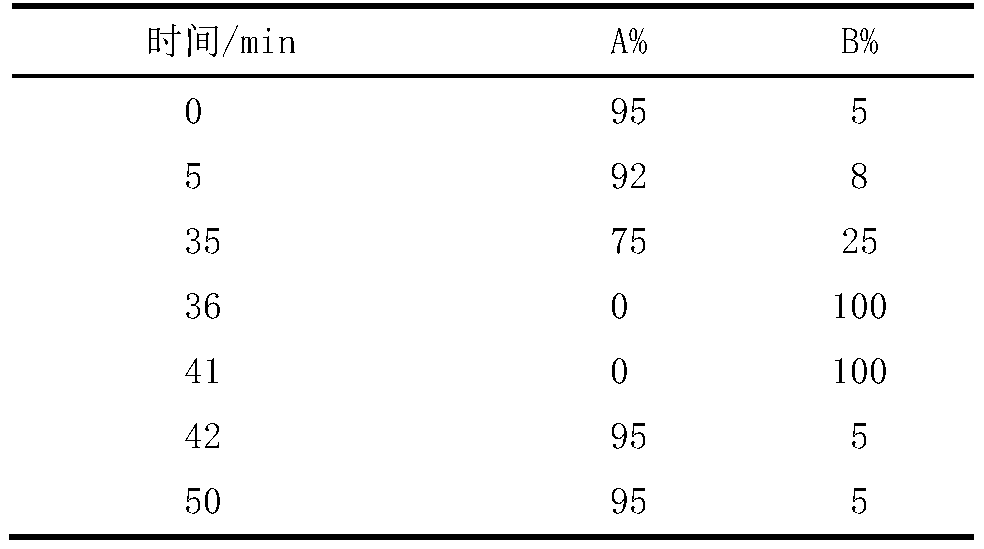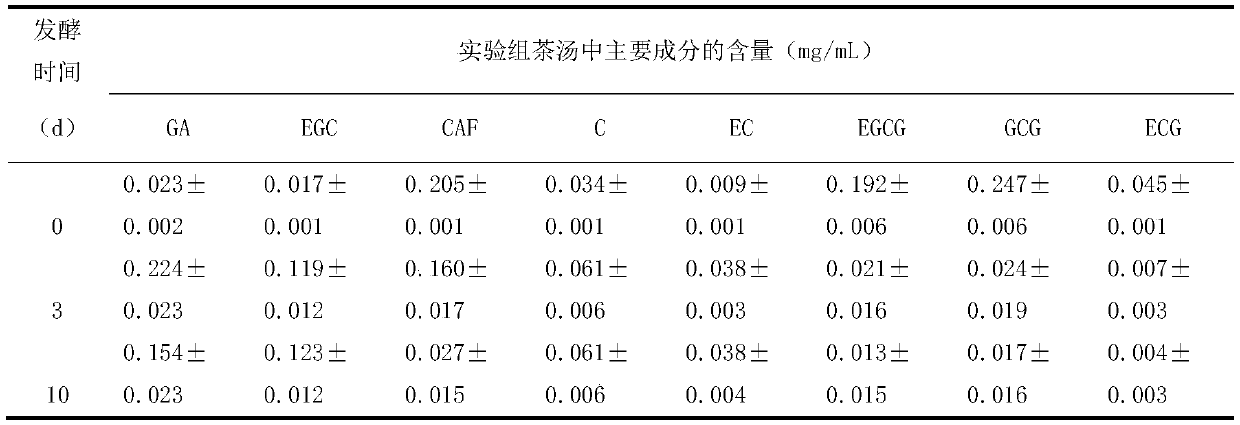A kind of tea drink with low caffeine and weak bitter taste and preparation method thereof
A low-caffeine, tea beverage technology, applied in the direction of tea, tea extraction, fungi, etc., can solve the problem of high caffeine content, achieve the effect of reducing bitterness, low ester catechin content, and unique flavor
- Summary
- Abstract
- Description
- Claims
- Application Information
AI Technical Summary
Problems solved by technology
Method used
Image
Examples
Embodiment 1
[0028] During the preparation process of the present invention, the Penicillium sclerotinum strain mentioned is preserved in the China Center for Type Culture Collection, and the preservation number is: CCTCC No: M2016543.
[0029] Wherein, the reagents used in the examples of the present invention are all analytically pure.
[0030] The present invention is described in detail below in conjunction with example
[0031] In order to measure that the Penicillium sclerotinum isolated by the present invention can degrade caffeine, and the bacterial strain can produce tannase simultaneously, a large amount of tannase can be obtained in a short time through solid fermentation culture, and its specific assay method is as follows:
[0032] Add 1.0×10 green tea soup 8 CFU / mL of the bacterial suspension of Penicillium sclerotinum preserved in the present invention, the inoculation amount is 1%, and the same amount of sterilized water is inserted into the control group. Then cultivate ...
Embodiment 2
[0052] A method for preparing low-caffeine tea beverage protoplasm, the specific steps are as follows:
[0053] 1) Accurately weigh 6.000g of ground green tea samples and put them into a 500mL conical flask, add 200-400mL of boiling water, and extract in a boiling water bath for 30min.
[0054] 2) After the leaching is completed, immediately filter under reduced pressure while hot to obtain the green tea filtrate.
[0055] 3) After the green tea filtrate is cooled, transfer it to a 1L volumetric flask, and dilute to 1L with distilled water.
[0056] 4) Add 10 g of glucose to each liter of tea soup, wrap it up and sterilize at 121° C. for 20 minutes. After the sterilization, green tea soup is obtained.
[0057] 5) Take the Penicillium sclerotinum strain preserved in the present invention, and the Penicillium sclerotinum strain is preserved in the China Type Culture Collection Center, and the preservation number is: CCTCC No: M2016543, inoculated into the PDA medium for activat...
Embodiment 3
[0062] A method for preparing low-caffeine tea beverage protoplasm, the specific steps are as follows:
[0063] 1) Add boiling water after drying the freshly picked tea tree fresh leaves, and soak in boiling water for 60 minutes.
[0064] 2) After soaking, immediately filter while hot to obtain green tea filtrate.
[0065] 3) adding sucrose or glucose to the green tea filtrate, high temperature sterilization, and after the sterilization, green tea soup is obtained.
[0066] 4) Take the Penicillium sclerotium strain preserved in the present invention, and the Penicillium sclerotium strain is preserved in the China Center for Type Culture Collection, and the preservation number is: CCTCC No: M2016543, and placed in PDA medium for activation to obtain activated bacterial strain Penicillium nucleatum, and formulated to 1.0 x 10 6 CFU / mL Penicillium sclerotiorum suspension.
[0067] 5) Add 1.0×10 6 CFU / mL Penicillium sclerotinum suspension, the inoculum size is 10%, aerobic cul...
PUM
 Login to View More
Login to View More Abstract
Description
Claims
Application Information
 Login to View More
Login to View More - R&D
- Intellectual Property
- Life Sciences
- Materials
- Tech Scout
- Unparalleled Data Quality
- Higher Quality Content
- 60% Fewer Hallucinations
Browse by: Latest US Patents, China's latest patents, Technical Efficacy Thesaurus, Application Domain, Technology Topic, Popular Technical Reports.
© 2025 PatSnap. All rights reserved.Legal|Privacy policy|Modern Slavery Act Transparency Statement|Sitemap|About US| Contact US: help@patsnap.com



